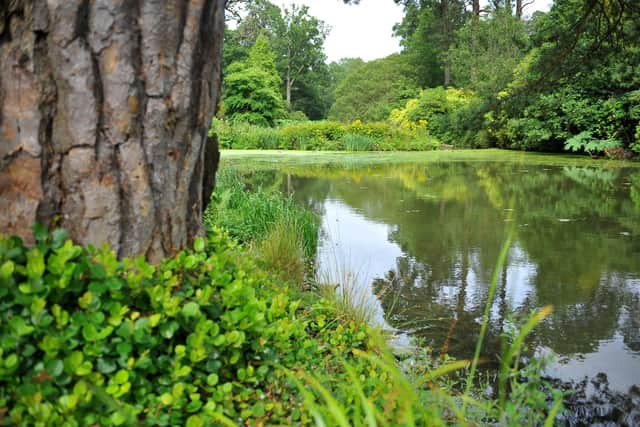Dog owners warned about ‘deadly’ algae
and live on Freeview channel 276
The British Veterinary Association (BVA) has issued its annual warning as warm weather conditions spark concerns about an increased risk of blue-green algae growth.
The warning follows confirmed algal bloom sightings in lakes, ponds and rivers in around 50 locations across the UK, as identified by the UK Centre for Ecology and Hydrology’s (UKCEH) Bloomin’ Algae app.
Advertisement
Hide AdAdvertisement
Hide AdBVA said in late April a cocker spaniel died of suspected blue-green algae poisoning after a swim in a Hampshire lake.


A BVA spokesperson said, “Blue-green algae, or cyanobacteria, is a group of bacteria that can contain dangerous toxins which can be harmful and potentially fatal to pets, livestock and birds if ingested even in small quantities.
"The algae may appear as green or greenish-brown scum on the surface of water.
"Dogs can swallow it by drinking water from an affected lake, river or pond or while licking their fur after going for a swim.
Advertisement
Hide AdAdvertisement
Hide Ad"It’s possible for dogs to come into contact with the bacteria even if they don’t go into water for a paddle, as toxic blooms are often blown to the edges of water bodies.”


According to trend data supplied by Professor Alan Radford and his team at SAVSNET, University of Liverpool, suspected or confirmed cases reported by veterinary practices peak in July and August, at the height of summer, and aren’t restricted to any one part of the UK.
BVA president Justine Shotton added, “Many dogs love nothing more than a paddle in a lake to cool off in this weather, but we’d urge pet owners to keep them on a lead during walks near water bodies confirmed to have algal blooms this summer.
"The majority of blooms are toxic and it is impossible to tell the difference visually, so it is better to be safe than sorry.
Advertisement
Hide AdAdvertisement
Hide Ad“It is also important to be aware of the symptoms of exposure. These commonly include vomiting, diarrhoea, drooling, disorientation, trouble breathing, seizures, and blood in faeces.
"They can appear within a few minutes or hours of exposure, depending on the type of toxin ingested, and can cause liver damage and ultimately be rapidly fatal if left untreated.
“There is currently no known antidote for the toxins, so dog owners should seek prompt veterinary treatment to tackle their effects and ensure a good chance of recovery for their pet."
Dr Linda May, a freshwater ecologist at UKCEH, said all reports of suspected blue-green algae are available to view via the Bloomin’ Algae app.
Advertisement
Hide AdAdvertisement
Hide AdDr May said, “By submitting records, people are providing a useful early warning to pet owners and watersports enthusiasts."
BVA has urged pet owners to keep an eye out for any warning signs by bodies of water.
The spokesperson said, “Keep pets on a lead and by your side around water bodies known or suspected to have a blue-green algal bloom – don’t let pets swim in it or drink from it.
“If your dog has been swimming outside, wash its coat thoroughly with clean water afterwards.
Advertisement
Hide AdAdvertisement
Hide Ad“Seek emergency veterinary treatment if you’re concerned your pet may have ingested toxic algae."